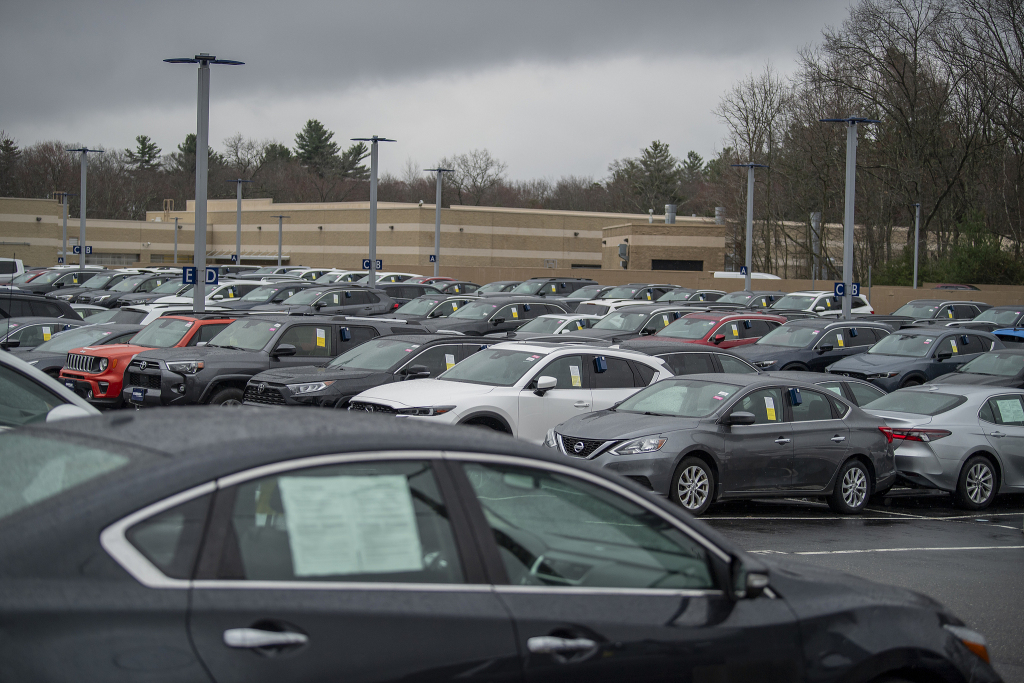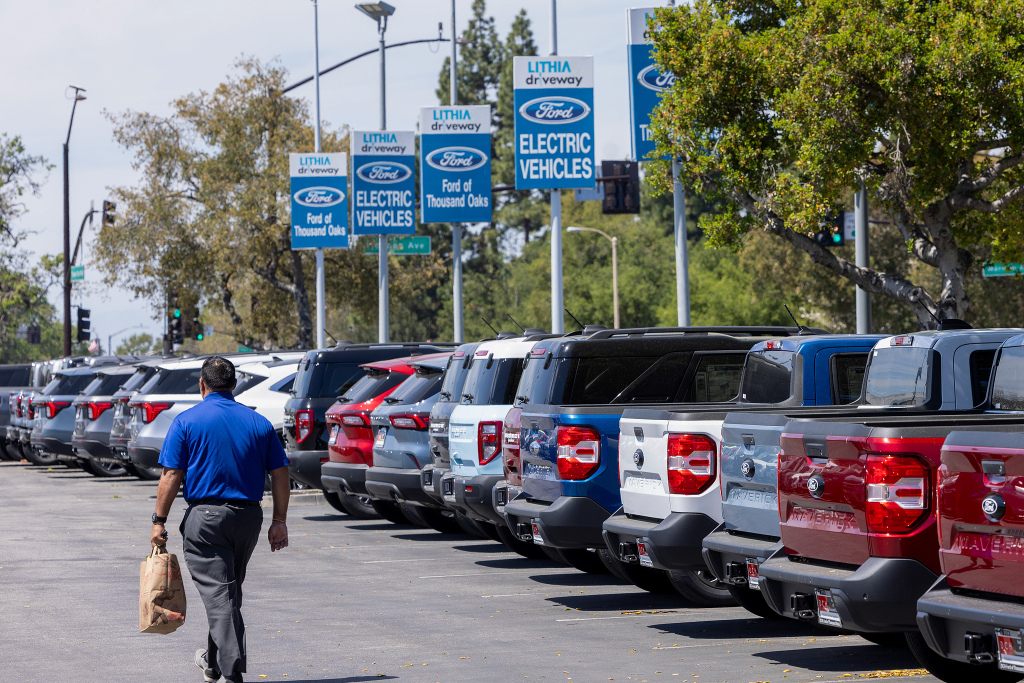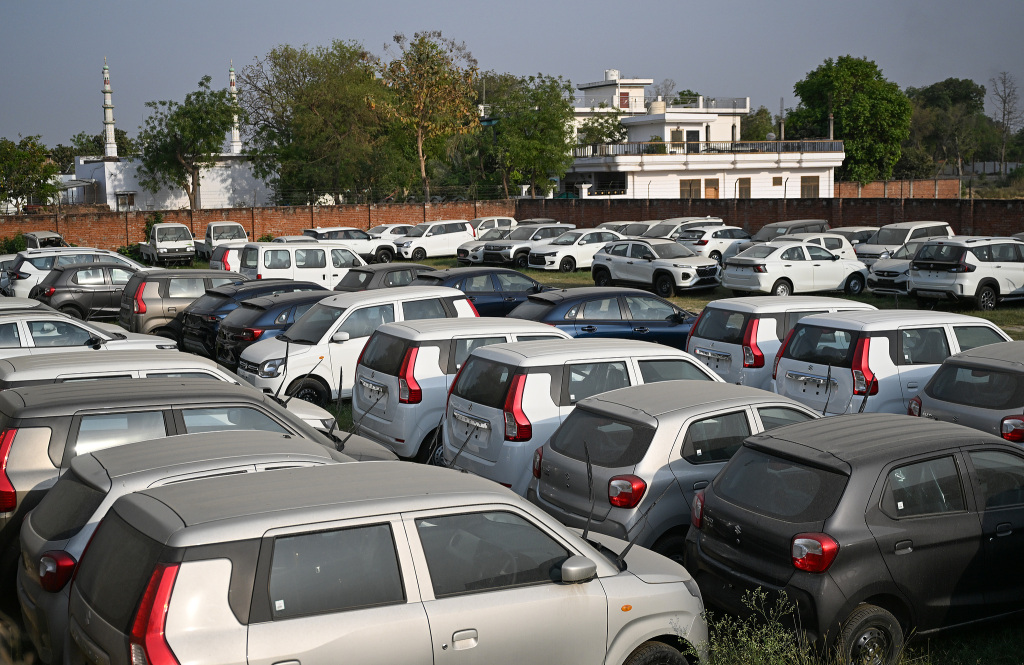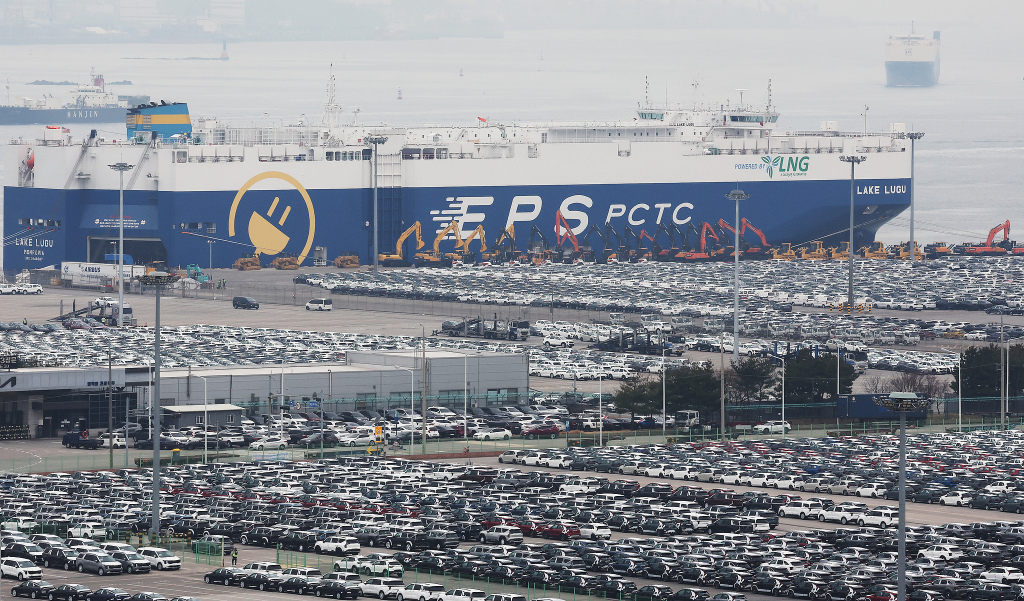
Global trade policy has reached a fork in the road.
On April 11, according to foreign media reports, the latest research by the Center for Automotive Research showed that the 25% auto import tariff policy implemented by Trump in early April this year is expected to cause a surge in costs for the U.S. auto manufacturing industry by about $108 billion in 2025. For Ford Motor, General Motors and Stellantis Group alone, costs will increase by $42 billion.

Cars are parked in a CarMax dealership parking lot in Westbourne, Massachusetts, USA, on April 7, 2025, local time.
According to estimates, under the new tariff system, the average tariff on imported parts for each domestically produced car in the United States is $4,911, while the average import tariff on complete vehicles has risen to $8,641. This forced Stellantis to urgently shut down its production lines in Mexico and Canada, and General Motors to increase truck production capacity at its Indiana plant to cope with the impact.
The American Automotive Policy Council bluntly stated that tariffs have imposed a heavy burden on the industry, and if implemented for a long time, they may weaken the competitiveness of automakers and increase consumer costs.
On the other hand, news came out that China and Europe are seeking a breakthrough in resolving trade frictions through new negotiations.
It is reported that the negotiations between the two sides on the issue of electric vehicle tariffs have entered a critical stage. In September 2024, the EU proposed a preliminary plan to study setting a minimum selling price for Chinese electric vehicles as an alternative to imposing additional tariffs, but due to unsuccessful negotiations, the EU officially implemented anti-subsidy tariffs ranging from 7.8% to 35.3% on Chinese-made electric vehicles in October of the same year, with the highest comprehensive tax rate reaching 48.1%.
Since April 2025, China and the EU have accelerated the restart of the negotiation process. On April 3, He Yadong, spokesperson of the Ministry of Commerce of China, confirmed at a regular press conference that China and the EU have agreed to restart the price commitment negotiations on the electric vehicle anti-subsidy case as soon as possible, aiming to create a stable environment for investment and cooperation between the two companies. Subsequently, Minister of Commerce Wang Wentao further clarified in a video conference with EU Trade Commissioner Šefčović on April 8 that the two sides will "immediately conduct negotiations on electric vehicle price commitments" and discuss issues such as market access and investment cooperation. Wang Wentao emphasized that there are no winners in a trade war, and China and the EU need to jointly maintain the multilateral trading system. The EU also expressed its willingness to cooperate with China to deal with the impact of unilateral tariffs from the United States.
The core point of contention in this negotiation is how to balance the EU's demands for industrial protection and the competitive advantages of China's electric vehicles.
The option of setting a "minimum selling price" as an alternative to tariffs may become the key to a compromise between the two sides. This mechanism requires that electric vehicles exported from China to the EU be no lower than a certain price to ease the EU's concerns about low-price competition while avoiding the escalation of a full-scale tariff war.
Currently, the negotiations are still facing multiple challenges. On the one hand, the positions within the EU are divided. Hungary and other countries have clearly opposed the tax increase and participated in legal proceedings, while major automobile countries such as Germany are worried that tariffs will increase the cost of local electrification. On the other hand, China insists on safeguarding its rights through the WTO mechanism and does not rule out taking countermeasures if the negotiations break down. Despite this, both sides have shown a pragmatic attitude, and the EU has postponed the original tariff vote to leave room for reaching a phased agreement.
Overall, the US tariff policy has exacerbated the supply chain crisis of local automakers, forming a vicious cycle of "cost increase - sales decline - investment reduction". Although China and Europe have differences in interests, they seek compromise through negotiation mechanisms. This difference will not only affect corporate strategies, but will also reshape the global automotive industry landscape.


